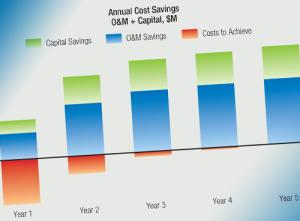Achieving Equitable Outcomes
Tom Flaherty is a Senior Advisor at EY-Parthenon, Ernst & Young LLP, in Dallas, and author of “Roll-Up: The Past, Present, and Future of Utilities Consolidation.”
Muss Akram is a Senior Director at EY-Parthenon, Ernst & Young LLP, in Houston.
Utilities consolidation since 1995 is well chronicled, yet its accomplishments are often unappreciated. Prior transactions have slowed customer rate growth, strengthened utility financial capacity, and enabled capital investment in grid hardening and modernization, creating benefits inuring to shareholders and customers alike.

While future mergers and acquisitions will continue this focus, an even more valuable benefit exists — accelerating the transition to a net-zero world through synergies deployment — but only if convincing regulatory plans are created by utilities, and only if equitable merger outcomes can be realized between shareholders and customers.
When the next U.S. utility stock-for-stock merger or acquisition occurs, company managements will again need to decide how to pursue its approval by state regulators, particularly how to balance risks, synergies, costs-to-achieve, and short- and long-term benefits among key stakeholders.
On one hand, utilities and shareholders are intent on ensuring that transaction requirements and outcomes are not one-sided. Regulators and intervenors are equally resolved to deliver and safeguard meaningful rate-level impacts and other benefits to customers.

